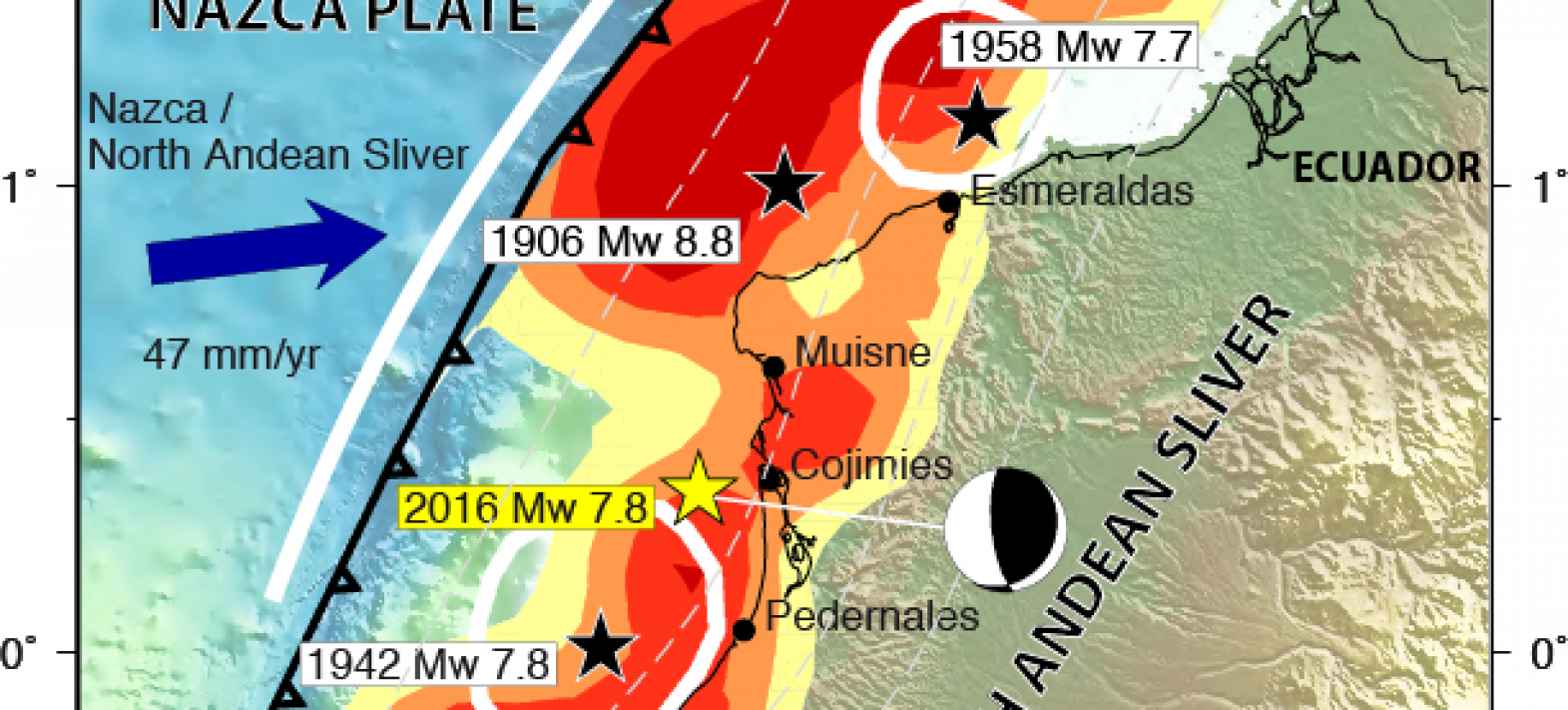Ecuador subduction ” supercyclic ” behavior highlighted after the Pedernales earthquake of April 16th, 2016
The Pedernales earthquake (magnitude 7.8) violently struck Ecuador's central coast on April 16, 2016, causing nearly 700 casualties and more than 16,000 injuries.

Publication date: 09/01/2017
Research
Related teams :
Tectonics and Mechanics of the Lithosphere
Related themes : Natural Hazards









